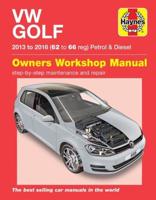Publisher's Synopsis
Ford's 351 Cleveland engine was designed to be a 'mid-sized' V-8 engine, and was developed for higher performance use on its launch in '69 for the 1970 models. With its poly-angle combustion chambers with canted valves and thin-walled casting technology, the unique design proved itself under the hood of Ford's Mustang, amongst other high-performance cars. The Cleveland addressed the shortcomings of the Windsor engine that preceded it, namely cylinder head flow. Renewed enthusiasm in this engine has spawned an influx of top-quality components that make building and modifying these engines affordable and doable at home in your own garage and workshop. This book reviews the history and variations of the 351 Cleveland, and related engines the 351M and 400M, with their shorter throw and crankshaft and taller deck and longer stroke respectively. Dimensions and specifications for each engine are given (rod length, deck size, compression ratio, main bearing size, etc), along with tips for identifying both design differences, and casting numbers are shown, and each engine has it's strengths and weaknesses assessed. Traditional power tricks and methods to increase efficiency of these engines are shared in authoritative step-by-step methods.










